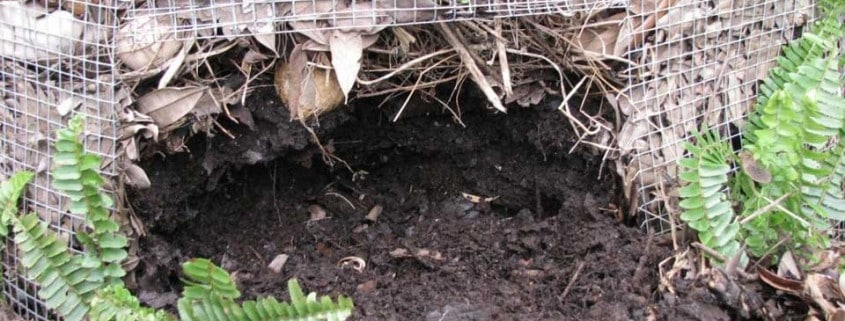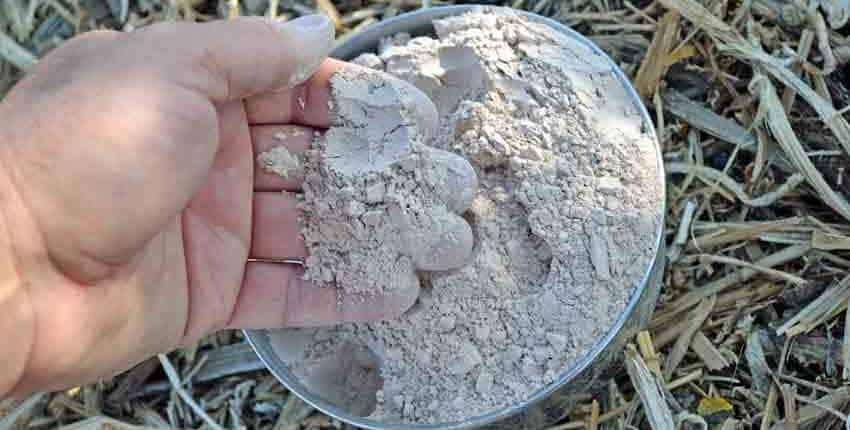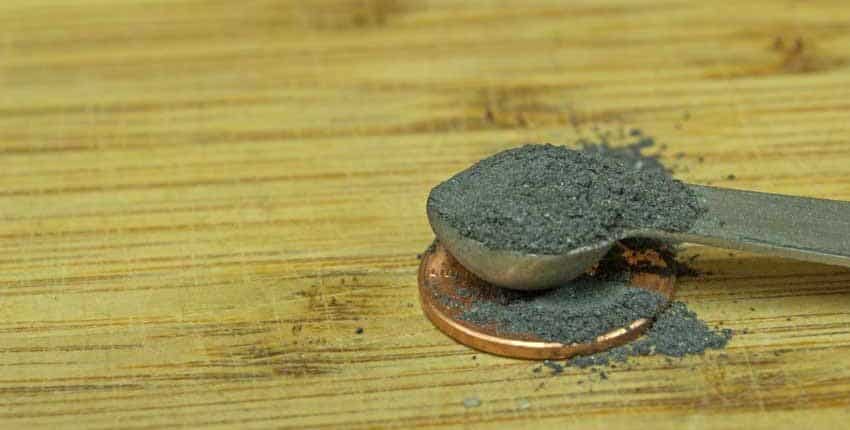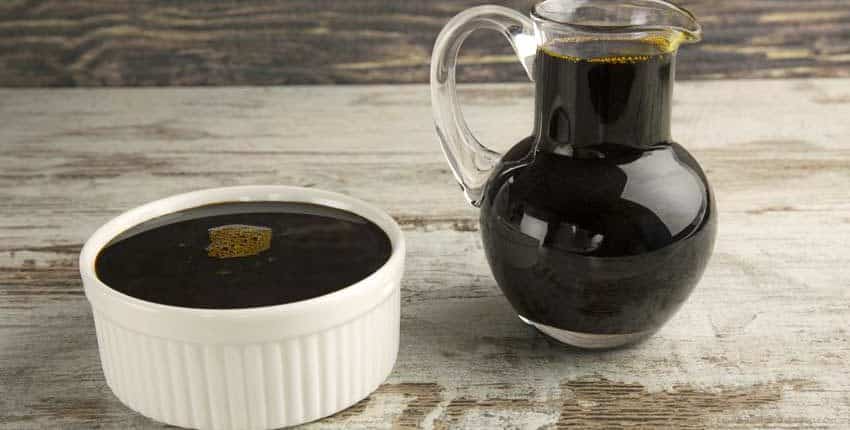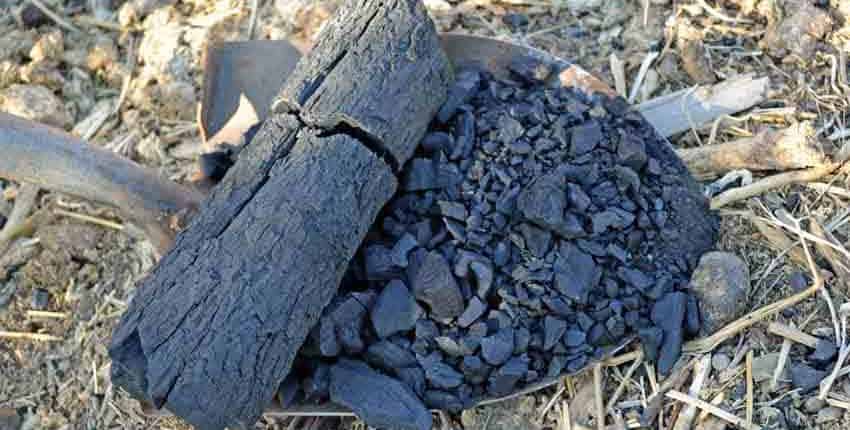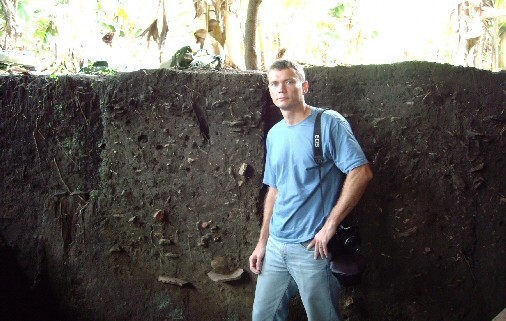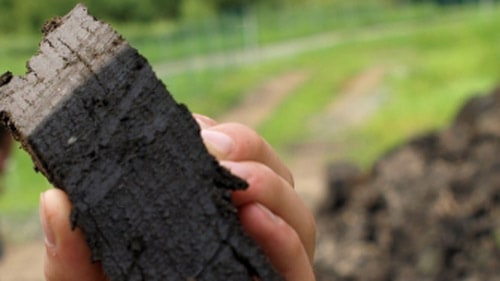Compost Feeds and Improves Your Soil
Compost is one of the best mulches and soil amendments available. It is also one of the easiest ways to feed your garden soil and can (and should) be used instead of commercial chemical fertilizers. It can be easily improved or customized for your specific garden conditions, and best of all, compost is cheap. You can often make it without spending anything or very little.
Using compost improves soil structure, texture, and aeration and increases the soil’s water-holding capacity while improving its drainage. All you need are some feedstocks, moisture, and time.
Compost loosens clay soils and helps sandy soils retain water. Adding compost improves soil fertility and stimulates healthy root development in plants. The organic matter in compost provides food for the microorganisms that digest and break down the matter, keeping the soil healthy and balanced. Feeding of the microorganisms also makes foundational minerals readily available to the plants, such as nitrogen, potassium, phosphorus, boron, silicon, magnesium, and trace elements. Well-fed, properly produced compost applied to the garden soil can create a condition where few soil amendments will be needed.
We will examine several aspects of compost and techniques to build the nutrient value of the compost for the garden. One of the most useful aspects of compost is its adaptability, as it can be “customized” or enhanced with many additions that will increase its fertility and value to the garden. This is not meant as an introductory how-to compost article – see our article Compost – What We’ve Learned for that. You can use the techniques shown here to customize your compost for your garden’s needs.
For our discussion, we will assume a manure-based compost combined with leaves or straw for the close to ideal 25-30:1 ratio of carbon to nitrogen (C/N). Here are some examples of the C/N ratio for common compost feedstocks-
One of the common techniques of the Genetic Engineering industry is called “Stacking,” or combining several traits into one variety to achieve multiple benefits. I’m unsure if it works, but the same thought pattern can be applied to our compost, with results that don’t need to be studied for a decade or two to determine if they are dangerous. We will be looking at and discussing several of these techniques, all of which can be “Stacked” or combined to achieve greater benefits. Some of these techniques are commonly used in the garden and will have similar effects in the compost pile.
Ingredients That Boost Compost
Mineralization– If you’ve followed the previous soil-building blog posts, you understand the importance of adding minerals to your garden soil and its incredible benefits. For those who haven’t read it, read Mineral Restoration of Your Garden Soil for the first part and Mineral Restoration of Your Garden Soil Part II for the second. Adding a broad-based mineral supplement to your compost will kick-start the decomposition and feeding of the microorganisms and give them a powerful, healthy start. This will carry over when you apply the compost to your garden, as the remainder of the minerals and trace elements will benefit the garden soil, your plants, veggies, and ultimately – you.
Mycorrhizal Fungi– An ancient, microscopic group of fungi that develop symbiotic relationships with about 90% of crop species. They colonize in and around the roots and root hairs, sending hyphae– strands about 1/25 the diameter of a human hair- into the surrounding soil anywhere from 15 to 25 inches. This increases the nutrient “reach” of the plant from 10x to sometimes 100x! Mycorrhizae create enzymes to mobilize and release phosphorus, nitrogen, zinc, iron, calcium, magnesium, manganese, sulfur, and several other nutrients from the soil and transport them to the host plant’s roots. They also produce antibiotics and other defensive compounds that fight damaging root diseases by other fungi and bacteria.
Molasses– From Wikipedia: Molasses is a viscous by-product of the processing of sugar cane or sugar beets into sugar. Sulfured molasses is made from young sugar cane. Sulfur dioxide, which acts as a preservative, is added during the sugar extraction. Unsulfured molasses is made from mature sugar cane, which does not require such treatment. There are three grades of molasses: mild or Barbados, also known as first molasses; dark or second molasses; and blackstrap. The third boiling of the sugar syrup makes blackstrap molasses. The majority of sucrose from the original juice has been crystallized and removed. The calorie content of blackstrap molasses is still mainly from the small remaining sugar content. However, unlike refined sugars, they contain trace amounts of vitamins and significant amounts of several minerals. Blackstrap molasses is a source of calcium, magnesium, potassium, and iron; one tablespoon provides up to 20% of the daily value of each of those nutrients.
Molasses is a very valuable addition to the compost pile, as well as to the garden itself. Unsulfured blackstrap is the preferred variety due to the mineral content, but any of the unsulfured ones will do fine. Beyond the minerals, there are benefits, such as the natural sugar content that will feed the microorganisms in the compost or soil of the garden. Use one cup to a gallon of water and spray onto the pile, or add to the drip system of the garden. The readily available sugar content will skyrocket the microbial activity. Blackstrap molasses is also commonly used in horticulture as a flower blooming and fruiting enhancer, particularly in organic hydroponics. Use the before-mentioned mixture in the drip system or spray alongside the roots of fruiting vegetables as they start to flower to increase their flowering and fruiting.
See Milk & Molasses – Magic for Your Garden for the whole story!
Milk– Using milk in your compost and in your garden will probably come as a surprise to most. Upon closer inspection, however, it starts to make sense. The amino acids, proteins, enzymes, and natural sugars that make milk food for humans and animals are the same ingredients in nurturing healthy communities of microbes, fungi, and beneficials in your compost and garden soil. Raw milk is the best, as it hasn’t been exposed to heat that alters the components in milk that provide perfect food for the soil and plants. Using milk on crops and soils is another ancient technique lost to large-scale modern industrial agriculture.
Recently a Nebraska farmer completed a 10-year study on applying milk at different rates to his pastures and recorded the results with the help of the local Agricultural Extension agent, a university soil specialist and weed specialist. What they found was amazing- the grass production was drastically increased; the soil porosity or ability to absorb air and water doubled; microbe activity and populations increased; cows were healthier and produced more milk on treated pastures; the brix or sugar level in the pasture tripled, indicating more nutrients were stored in the grass than before. Grasshoppers abandoned the treated pastures- the sugars are a poison to soft-bodied insects as they do not have a pancreas to process the sugars. This also explains why insects leave healthy, high-brix level plants alone, as they contain more sugars than stressed and sickly ones.
The ratio can range from 100% milk to a 50/50 mixture with water, with no loss of benefits. Spray it on the compost and garden soil prior to planting and as needed when insects appear. Spray directly on the insects and around the areas they inhabit.
See Milk & Molasses – Magic for Your Garden for the whole story!
Manure– Earlier, I had said the assumption was a manure-based compost. Manure is usually available, even if you don’t have horses or cows. If you get to know farmers at the farmer’s market or growers that sell in your area, most have animals, which usually means excess manure. Most folks with animals are happy to have someone pick up their excess manure. The more different animals contributing to the compost pile will ensure a healthier and more diverse population of microbes and critters, meaning a better, healthier compost. Horses are not ruminants; their manure is just chopped grass and alfalfa. It decomposes well and provides a good compost. Sheep and cattle are ruminants, so their manure has been broken down further and has a lot of beneficial bacteria and microbes that will jump-start the compost. You get the best of both to your soil’s benefit!
Coffee Grounds– Another unusual but highly beneficial and productive addition to your compost. The grounds of already brewed coffee are usually pH neutral yet have been shown to have a great buffering capability. Adding coffee grounds to acidic or basic soil will help minimize the acidic or basic effects and bring the pH back towards neutral, about 7.0. Grounds are a Nitrogen source for the 25:1 C/N ratio, so depending on what feedstock is being used, coffee grounds can be very valuable to keep the decomposition moving along. The upper limit on grounds is 25%, so a LOT of coffee grounds can be added if needed! Worms love coffee grounds, which act as a “worm attractant.”
So, now that you’re considering adding coffee grounds to your compost, where do you get them? Your office or work is a good start, as well as home. Starbucks has a corporate policy of working to reduce waste, so they usually have a covered bucket next to their stand in which they put the used grounds. The paper filters are compostable as well, as they are usually unbleached. Coffee shops, diners, restaurants, and donut shops are also great resources. If you feel funny asking for coffee grounds, you will probably be surprised when they respond enthusiastically when they understand what you’re trying to do.
See Coffee Grounds Build Compost and Soil Health to learn more!
Charcoal or BioChar– This is another of the soil-building articles that was previously written. Please read Terra Preta- Magic Soil of the Lost Amazon for Part One and Terra Preta Part II to get up to speed. Charcoal needs to be hardwood or lump, not briquettes, and should be crushed into smaller-sized chunks, about the size of corn seed. It needs time to “activate,” where it absorbs minerals and trace elements and provides a home for the microbes, beneficial bacteria, and fungi that make the compost so nourishing to the garden. The charcoal will last at least 100-300 years, so it isn’t something that will be depleted quickly. Adding it in small amounts to the compost and thus to the garden for several years will only increase your soil’s health, fertility, and productivity each year.
Where to Start
Work with what you have. You may not have a lot of nitrogen (green) or an abundance of carbon (brown) ingredients. Use what you have readily available. It’s not complicated, if you don’t have the “correct” ratio, just substitute some time and everything will be just fine. Use the above chart and this article to get the ratio close, and don’t sweat the small stuff. The gentle folks in India have been composting for 5,000 years without compost tumblers or fancy enclosures. Work with your local conditions- for instance, we must water our compost to keep it alive.
Now you can see what is meant by “Stacking” of these techniques! Compost is very valuable, but when combined with some or all of these techniques, things will start moving in a positive direction! The health and fertility benefits will increase exponentially, not only once but each time the compost is added to the garden soil, which should be twice a year- in the spring before planting and again in the fall. This creates an ever-increasing spiral of benefits for the garden, the plants, the fruits and vegetables, and you and your health.
This proves what Sir Albert Howard said to the House of Commons in England at the end of the 19th Century: “As goes the health of the soil, so goes the health of the nation.” He was laughed out of the House of Commons, but we realize now, 120 years later, that what he said is true. Improve the health of your soil, and your health will be improved from the produce from your garden.

